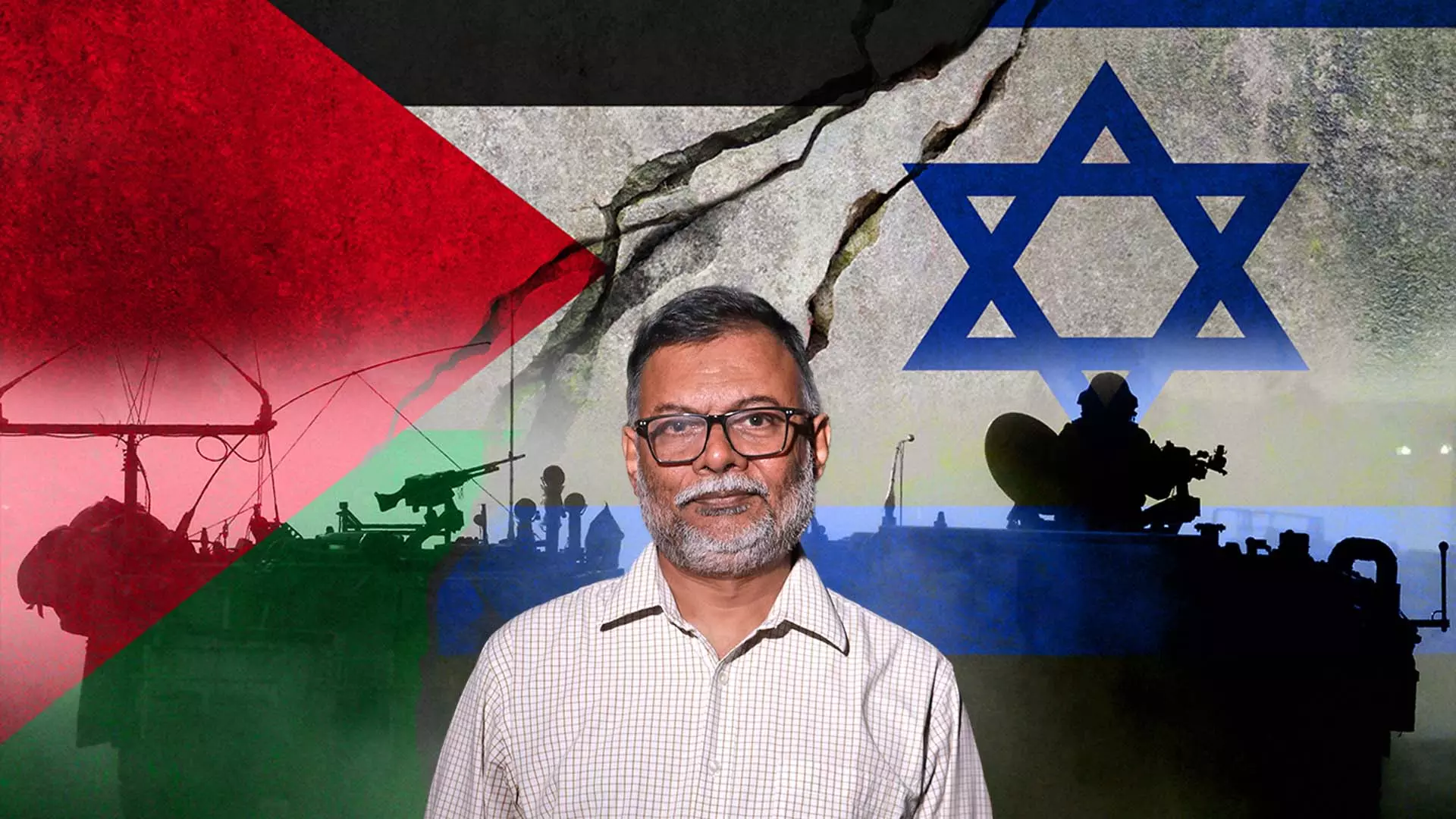
Israel, Palestine conflict
Momentum for Palestine statehood builds up; what global recognition means now
France, UK, Australia are among nations signalling recognition, which can effectively isolate the US and shift the dynamics in decades-old Israel-Palestine conflict

As the death toll in Gaza mounts and pressure builds on Israel, a growing number of nations are pushing to recognise Palestinian statehood.
France, the UK, Canada, Australia, and others have recently signalled their intent to support recognition — a move that could shift the dynamics of the decades-old conflict.
In this interview, The Federal’s consulting editor K S Dakshina Murthy explains what global recognition means, why the US remains opposed, and how history has shaped the current stalemate.
How will recognising Palestine as a state help resolve its long-standing dispute with Israel?
It will not directly resolve the conflict, but it makes a positive difference to the long struggle for a two-state solution. Out of 193 UN member nations, 147 have recognised Palestine over the last three decades. India was among the earliest, in 1988.
The current momentum is significant because it includes G7 nations. France and Britain are permanent members of the UN Security Council. China and Russia recognised Palestine in 1988, so the US will end up being isolated in the Security Council on this issue. This also signals a rift within Western allies, with Canada and Australia planning recognition.
Also read: Netanyahu defends IDF’s plan to take over Gaza, says it's vital for Israel’s security
At the UN, Palestine holds a permanent observer status, which allows it to participate in debates and meetings but not vote. Israel and the US remain firmly opposed.
Israel argues that a Palestinian state would threaten Jewish security, and the US supports this view.
While the US recognises the Palestinian Authority, created under the 1993 Oslo Accords, this does not equate to recognising a full-fledged state. US vice-president J D Vance recently claimed Palestine lacks a functional government, justifying non-recognition.
Does Palestine meet conditions required for statehood? If so, why is it still not recognised?
There are four conditions for statehood: a defined territory, a permanent population, a functional government, and the capacity to engage in international relations. Palestine broadly meets these under the 1947 UN Partition Plan, which allocated the West Bank, Gaza, and East Jerusalem for an independent Palestine alongside Israel.
Much of this land is now under Israeli occupation. With enough pressure, a deal is still theoretically possible, but US support would be crucial. Full recognition is stalled because the US vetoes the proposal at the Security Council. The US insists Israel and Palestine must first reach an agreement — a stance undermined by Israel’s consistent refusal to accept Palestinian statehood.
Also read: French President Macron says France will recognise Palestine as state
Because Palestine is not recognised by the Security Council, it is not sovereign, lacks a standing army, and its people are considered stateless. In July, 125 nations, co-chaired by France and Saudi Arabia, urged all countries to recognise Palestine and called on Israel to end its assault on Gaza. The declaration proposed the Palestinian Authority govern the state, with Hamas disbanding and surrendering its weapons.
The US and Israel boycotted the meeting.
Also read: G7 split wide open: What is behind Macron’s big Palestine move?
Meanwhile, Israeli Prime Minister Benjamin Netanyahu has vowed to control Gaza’s security and eliminate Hamas. Reports suggest talks with South Sudan to resettle Gazan Palestinians — a move that would violate international law. Despite this, pressure on Israel is increasing, with France, Canada, Australia, Britain, and New Zealand expected to formally recognise Palestine in the coming months.
What is India’s stand on Palestinian statehood?
India recognised Palestine in 1988 and historically supported the Palestinian cause and a two-state solution, especially under Jawaharlal Nehru and Indira Gandhi.
Since 1991, with economic reforms and the end of the Cold War, India has moved closer to the US and, by extension, Israel. Since 1992, it has balanced ties — maintaining support for Palestine while deepening defence and trade relations with Israel, including becoming one of its biggest arms buyers.
In UN votes, India often abstains when opposing Israel since it might strain relations, but continues to back the two-state solution. Its position also reflects its close ties with the Arab world, making it careful not to alienate either side.
How did Israel secure recognition so quickly, while Palestine has waited decades?
On May 14, 1948, as the British mandate in Palestine ended, Jewish Agency head David Ben-Gurion declared the State of Israel. The same day, US President Harry S Truman recognised it, giving the move enormous momentum. In March 1949, the UN Security Council admitted Israel as a member.
At the time, a UN Partition Plan (November 1947) proposed separate Jewish and Arab states. Palestinians and Arab states opposed it. Ben-Gurion’s unilateral declaration, backed by the US, effectively derailed the plan. The opposition led to a war from 1947 to 1949, during which Palestinians failed to secure recognition as they fought to reclaim land.
Another war in 1967 saw Israel seize East Jerusalem, Gaza, and the West Bank — areas intended for Palestine’s future state. This reshaped the map and entrenched Israeli control. Despite further conflicts, such as the 1973 war with Egypt and Syria, and decades of negotiations, Israel retained its hold.
The situation has remained unresolved for over eight decades, with Israel firmly established as a state and Palestine struggling for recognition. The current push for recognition reflects shifting global politics, but whether it changes the reality on the ground remains to be seen.
The content above has been transcribed from video using a fine-tuned AI model. To ensure accuracy, quality, and editorial integrity, we employ a Human-In-The-Loop (HITL) process. While AI assists in creating the initial draft, our experienced editorial team carefully reviews, edits, and refines the content before publication. At The Federal, we combine the efficiency of AI with the expertise of human editors to deliver reliable and insightful journalism.

